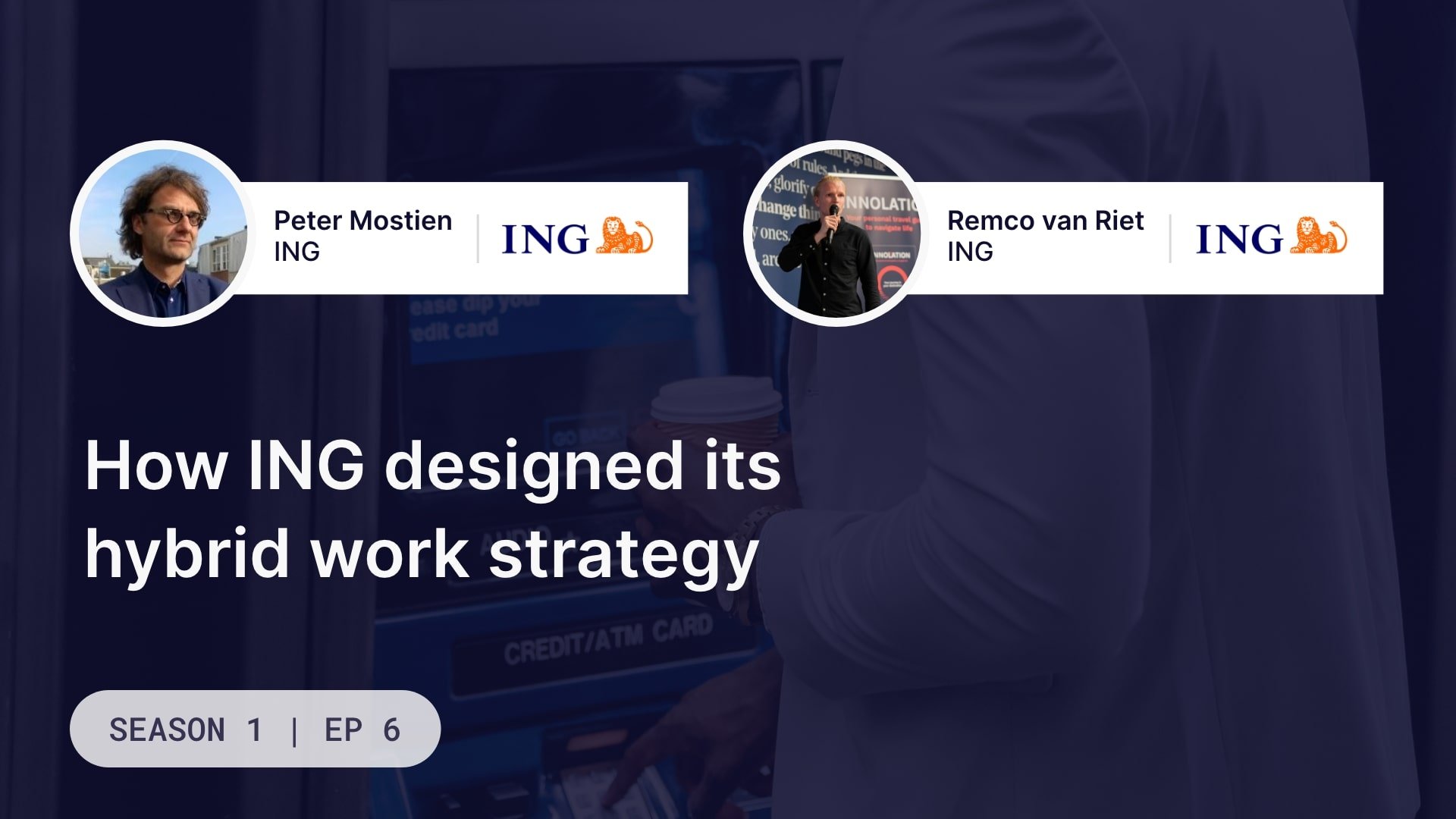How ING Designed Its Hybrid Work Strategy

VergeSense is the industry leader in providing enterprises with a true understanding of their occupancy and how their offices are actually being used.
This article distills key insights from Season 1, Episode 6 of True Understanding, a podcast that explores the strategies shaping workplaces of tomorrow.
The workplace is evolving, and the design of offices and buildings is no exception. Advances in technology are changing the way we work and interact with our environment, and this is reflected in the way we design our workplaces. Here, we’ll explore the future of workplace design and how smart buildings and data analytics can improve employee experience with Remco van Riet and Peter Mostien at ING where they explain their thoughts on hybrid work strategies.
The Evolution of Workplace Design
Over the past few decades, the design of workplaces has changed significantly. The traditional office layout, with cubicles and private offices, has given way to more open, collaborative spaces. This shift has been driven by a desire to promote teamwork and creativity, as well as the recognition that the traditional model is often inefficient and isolating. In the Netherlands, modular designs and desk sharing have driven a new way of thinking.
Today, workplace design is moving even further away from the traditional, as companies embrace new technologies and ways of working. One of the key drivers of this shift is the rise of smart buildings.
Remco said, “People just could stay sitting at their desk with their team, and they collaborated at their desk. So then the data would've told us, desks are more popular, but actually, people are performing an activity that was previously held in meeting rooms. So I think we always need to be concise. How do we use the data? How do we interpret the data, check with it real life by, I think bringing them together is where the value lies.”
Smart Buildings and Data Analytics
A smart building is one that uses advanced technology to optimize its performance and improve the experience of its occupants. This includes everything from automated lighting and climate control to occupancy sensors and data analytics.
Data analytics is particularly important in smart building design, as it allows companies to collect and analyze data about how their buildings are being used. This data can be used to optimize everything from energy usage to space utilization and can provide valuable insights into how employees are interacting with their environment. It has allowed ING to better understand how their spaces are being used, when they’re being used, and how to better equip those spaces for success. Interestingly, they found that workers are more internally mobile in-office now as opposed to pre-pandemic times. They uncovered that they need less desk space but more meeting space.
The Benefits of Smart Building Design
Smart building design offers a number of benefits for both companies and their employees. For companies, the use of data analytics and other smart technologies can help to reduce energy costs, improve operational efficiency, and enhance the overall productivity of the workforce.
For employees, smart building design can provide a more comfortable and personalized work environment. By collecting data about employees’ preferences and behaviors, companies can tailor the workplace to better suit their needs. This can include everything from lighting and temperature to the layout of the space itself.
The Role of VergeSense in Smart Building Design
VergeSense is a company that specializes in smart building design and data analytics. Our system uses sensors and artificial intelligence to collect data about how people are using a space, including everything from occupancy to air quality.
This data can be used to optimize the design of the space, making it more comfortable and productive for employees. It can also help companies to identify areas of waste or inefficiency, and make data-driven decisions about how to improve their operations.
The Future of Workplace Design
As technology continues to advance, we can expect to see even more changes in the way we design our workplaces. Smart buildings and data analytics will play an increasingly important role in this process, as companies look for ways to improve the experience of their employees and enhance their overall productivity.
In the future, we can expect to see workplaces that are even more personalized and flexible, with a focus on creating a comfortable and productive environment for employees. And with the help of companies like VergeSense, we can be confident that these new designs will be backed by data and informed by the latest advances in technology.
The design of workplaces is changing rapidly, and the rise of smart buildings and data analytics is driving much of this change. With the help of companies like VergeSense, we can expect to see workplaces that are more comfortable, more efficient, and more personalized than ever before. Remco said it best when he stated, “Sometimes you think big, you also start big, but I think that's where the challenge comes from. I think we're still trying to predict the future. We do not know how people are gonna work in one or two years, but the only thing we know for certain is changes are inevitable, and changes are coming more rapidly and faster than ever before.”
Listen to the full episode and other True Understanding episodes here: